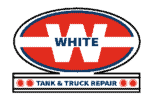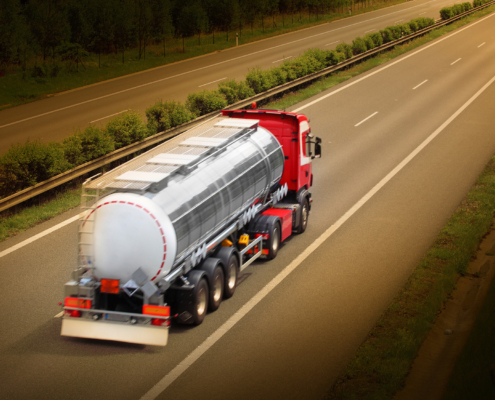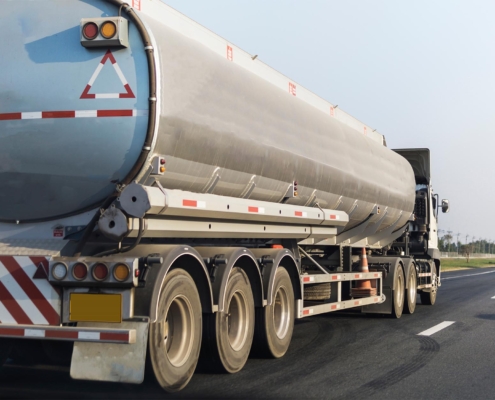
The Importance of Hazmat Compliance and Tank Testing
Hazmat compliance is a critical aspect of any operation involving hazardous materials. It requires following certain protocols and regulations to ensure the safety of employees, customers, and the environment. In this article, we will discuss hazmat compliance and why tank testing is important for hazmat operations. We will also explain how to read a safety data sheet (SDS) to understand the potential hazards associated with trailers used for hauling hazardous materials.
What Is Hazmat Compliance?
Hazmat compliance is essential for any operation that handles hazardous materials. This includes truck drivers transporting hazardous materials and operators of warehouses or terminals who receive shipments from these drivers. Hazmat compliance includes:
- Following protocols such as proper labeling and packaging
- Verifying the nature of the material being transported
- Ensuring necessary safety equipment is available and functional
- Training all personnel involved in hazmat operations properly
- Keeping records related to the shipment
What Role Does Tanker Truck Testing Play?
Transporting hazardous material is a dangerous but necessary job, and the regulations governing this task are comprehensive. Not only do drivers need special training to transport the most hazardous materials, but the tanks that hold the material themselves must be periodically inspected by certified professionals.
Tank testing is an essential part of hazmat compliance. The process involves checking all components of a trailer’s tank system for leaks to ensure it is safe to transport hazardous material. This includes checking hoses, valves, doors, and seams to ensure they are secure. Tank testing also involves inspecting storage compartments for potential hazards such as flammable liquids or combustible dusts that may be present in the area.
Safety Data Sheets for Safe Hazmat Hauling
In addition to tank testing, it is important to read a safety data sheet (SDS) before hauling any hazardous material with a trailer. An SDS provides detailed information about the hazards associated with specific products so workers can take appropriate precautions when handling them. For example, some materials may cause skin irritation or be corrosive; others may produce toxic fumes upon contact with air or water.
What Are Considered Hazardous Materials
Knowing what is considered to be a hazardous material is important, as many carriers and shippers make the mistake of not checking before shipment. A “hazardous material” is anything that can cause an unreasonable threat to the public or the environment. This includes:
- Explosives
- Flammable and non-flammable gases
- Flammable liquid
- Oxidizing substances
- Poisonous materials
- Infectious substance
- Radioactive material
- Corrosives
- Hazardous waste
Identifying a substance is the most critical part of shipping as well as the most difficult, as certain materials have exemptions, such as consumer or agricultural materials.
Do you need hazmat compliance services for your operation? Check out our testing processes.
Hazardous Material Shipper Responsibilities vs. Carrier Responsibilities
When transporting hazardous materials, the shipper is responsible for complying with federal regulations. These revolve around the identification of the material that is being shipped as hazardous. The difference between “carrier” and “shipper” is sometimes a gray area. Still, the general difference between the two is that the shipper is the entity interested in transporting materials from one place to another. In contrast, a carrier is an entity that physically transports it.
Shipper Responsibilities
The most important responsibility of the shipper is to identify whether a material meets the definition of hazardous material and properly label it. Beyond identification, the shipper is required to determine the following:
- Proper shipping name
- Classification/division
- Labeling
- Proper packaging/shipping method
- Marking
- Employee training
- Shipping papers
- Emergency response procedures and information
- Blocking and bracing
- Placarding
- Security plan
- Incident reporting
Carrier Responsibilities
The carrier relies on the shipper to correctly identify and label the hazardous materials, but their responsibilities frequently overlap since the carrier is responsible for the physical shipment. They must verify that the materials are properly identified and labeled as well as:
- Ensure proper shipping papers are present and correct
- Mark placards and vehicles
- Conduct safe loading and unloading
- Perform blocking and bracing
- Ensure compatibility
- Report incidents
- Plan security plan
- Train employees
How to Read Hazmat Trailer Placard Colors
The US Department of Transportation requires shippers and carriers to label vehicles carrying hazardous materials. This has to be accurate because if the vehicle is involved in an accident first responders need to know how to approach the situation and if any specialized safety equipment is required. One of the easiest ways to identify the information on these placards is through the colors and patterns used. Here is a brief guide to HAZMAT placard colors so you can identify what these trailers contain without needing to read them:
- Orange: Represents packaged explosive materials including dynamite, fireworks, and ammunition. The type of explosive is noted on the placard, but orange always identifies products that can be explosive under certain conditions.
- Red: Represents flammable products like gasoline, fuel oil, acetylene, rubbing alcohol, paint, and acetone. These placards also feature a flame image and a notation of the flammable materials.
- Green: Represents non-flammable gases, like argon, usually used in welding. Tye green denotes no fire risk, but the contents may be under pressure which is a hazard for first responders.
- Yellow: Represents oxidizers which are substances that, when mixed with oxygen, are likely to combust, like ammonium nitrate, potassium nitrate, and halogens.
- White: Represents poisonous and bio-hazardous substances like dyes, acids, aerosols, and even medical waste. Toxic materials will be labeled poison and have a skull and crossbones symbol.
- Blue: Represents dangerous goods when wet, including sodium, calcium, and potassium.
- Red and white: Represents dangerous substances that may ignite when exposed to air, including white phosphorus and aluminum alkyl.
- Red and white stripes: Represents flammable solids that can efficiently combust, such as matches and magnesium.
- Red and yellow: Represents organic peroxides that can ignite and explode, such as benzoyl peroxide.
- Yellow and white: Represents radioactive substances commonly found in medical equipment. These placards will contain the radioactive symbol.
- White and black: Represents corrosive materials that can harm the skin, including batteries, hydrochloric acid, sulfuric acid, and sodium hydroxide.
- White and black stripes: Represents hazardous substances not categorized by the above such as dry ice and asbestos.
White Tank & Truck Repair: The Go-To Source for Hazmat Compliance Processes and Tanker Truck Testing
Since 1988, White Tank & Truck Repair has been the go-to source for any CDL hazmat tanker tests. Our team performs any necessary inspections to ensure a vehicle is properly equipped for the road. All procedures are federally regulated and executed by a crew of certified professionals. We supply all preventive maintenance for trucks and related equipment. And if your tank does not meet any of the required HAZMAT testing standards, we ensure it is repaired and retested before it becomes available for service. Contact us to get the hazmat compliance process started today.





